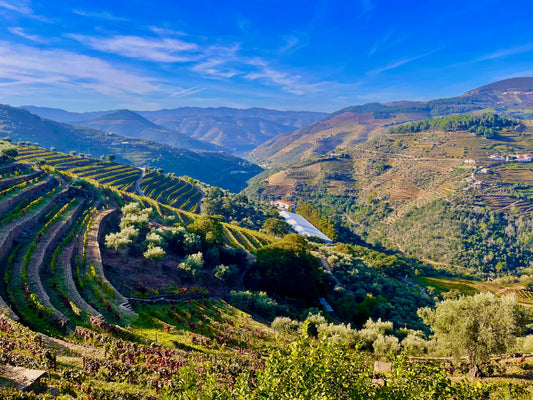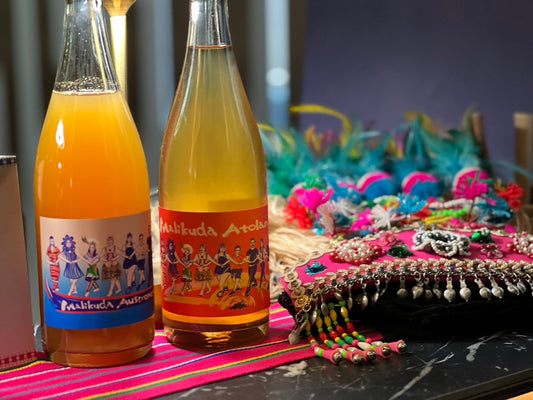| Specific bottlings from official sub-zones and single vineyards and even single parcels are ever more popular – and why stop there, asks Natasha Hughes MW. Why not have different cuvées from a single row – and would that be a bad thing? |
|
I first came across the idea of lumpers and splitters when I was at university, studying human evolution. These terms, which come from the science of taxonomy (the way in which living organisms are described and classified), sprang to mind at a recent tasting of Cabernet Sauvignons in the Banghoek Valley, a sheltered spot in South Africa’s Hottentots-Holland Mountains. As you might imagine, the fossil record of our ancestry is patchy, becoming ever more so the further back in time you go. Quite often palaeontologists find themselves arguing about whether a find belongs to a pre-existing species or an entirely new one based on the scant evidence provided by a solitary tooth or a centimetres-long scrap of femur. Lumpers are those whose tendency is to focus on common elements in order to group fossils together, while splitters are those with a propensity for assigning fossils to new species based on minute differences. So, how does taxonomy relate to wine tasting? The four flights I was tasting that day in South Africa had been organized by the winemakers according to their origin in Stellenbosch’s mountain wards. They came from the Polkadraai and Bottelary Hills, which lie to the west of Stellenbosch; the Simonsberg to the north; the Helderberg to the south; and another from the Jonkershoek and Banghoek in the east. These mountains, which turn the wider Stellenbosch region into a stunning amphitheatre composed of folds, valleys and slopes, not only offer a wide range of exposures for the vines planted in the area, but also an incredible patchwork of geological and meso-climatic diversity. The winemakers working in these mountains are, inevitably, attuned to the minute variations in their terroirs, and the way these variations express themselves in their wines, and they were hoping that I would pick up on the same subtleties they’d detected. |
|
Like most wine producers I’ve met, Stellenbosch winemakers are instinctive splitters. I first came across this phenomenon during a trip I took to the Corbières in southern France early on in my career. This is another region where the ravines and gorges of a series of herb-carpeted mountains lend themselves to fine oenological nuances. These distinctions prompted local growers to call for the creation of 11 crus within the boundaries of the appellation (to date only one of these has been approved, Corbières-Boutenac). But the tendency is not restricted to wine regions with dramatic mountain landscapes, with most supporters of the splittist tendency pointing to Burgundy as the platonic ideal of a wine region that has successfully compartmentalized its terroir into a series of tiny delimited sub-zones. And once you’ve got started on the splitting, why stop at sub-zones? Many producers don’t, which is why single vineyard bottlings have become a signifier of both quality and character. After all, the thinking goes, there must be a difference between the wines from vineyard X and those from vineyard Y, and that difference must be significant. If they weren’t, why would those vineyards be singled out for special attention, rather than being blended into a generic cuvée? Modern technologies offer a way to push splitter tendencies towards reductio ad absurdum, with posh viticulturists flying drones over vineyards to pinpoint minute differences in water availability, vine vigour and other viticultural elements that might affect the finished wines. Can it be all that long before some bright spark decides to bottle a contrasting pair of cuvées from the southern and northern ends of the same row? Despite these niggles, I’m not a fundamentalist lumper. The problem, as I see it, doesn’t really lie in a tendency to lump or to split – there’s room for both in the wine aisles. The subtleties of terroir may never be of relevance to most wine drinkers. But it would be incredibly foolish of me to deny that vinous variations based on small distinctions of climate, exposure, soil and a host of other modulations are there to be detected by the discerning taster. And it would be obtuse to deny anyone else the exploration and enjoyment of those differences. The real problem lies (as it so often does) in the wine trade’s poor ability to communicate those nuances to a wider audience. The expectation that wine lovers will magically intuit the nature of these fine distinctions based on a reference on the label to a specific site or an individual vineyard is unrealistic. For the first time ever, though, the dichotomy between lumping and splitting is easy to resolve. A simple QR code on a label would allow everyone access to the kinds of insights I’ve been lucky enough to explore over the course of my career. Anyone interested in understanding why, for instance, their Barolo is labelled as a Bussia rather than a Cannubi, or what the differences are between the Mosel’s Erdener Treppchen and its Ürziger Würzgarten vineyards could follow a link to a website – or better yet, a video clip – where producers could explain the fine detail of their terroirs and the way they expect terroir differences to be expressed in their wines. The distinction, then, between lumping and splitting would become a matter of nuance, just like the differences between the Cabernets of the Banghoek and those of the Simonsberg. |
| Natasha Hughes graduated as a Master of Wine in 2014, winning several prizes as she did so, including that year’s Outstanding Achievement Award. For the past 20 years she’s freelanced as a journalist and educator, specializing in wine and food. She also consults for private clients, wine producers and restaurants, and is currently researching her first solo book on the wines of Beaujolais. You can follow her on Instagram @latashmw |




